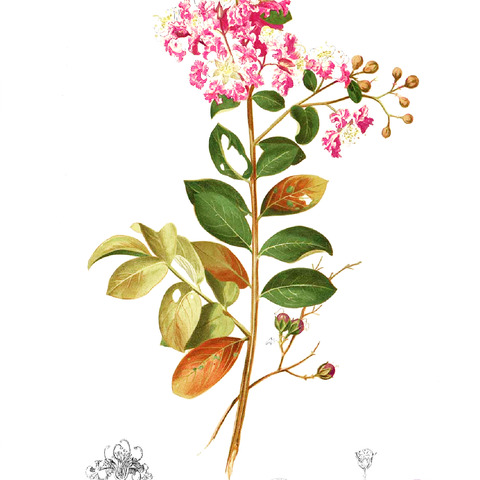Trees or shrubs. Young stems terete to frequently 4-angled or subalate, glabrous, puberulous, pubescent, or tomentose, often glabrescent. Leaves variably subopposite to subalternate or alternate, rarely opposite or truly alternate, subsessile or petiolate; stipules minute, caducous. Inflorescences terminal and axillary paniculate cymes. Flowers actinomorphic, campanulate to turbinate, flexibly 5-7-merous. Floral tube leathery, smooth walled with 6-12(-14) veins visible as dark lines, or with broad to narrow ribs or ridges; sepals narrowly to broadly deltate, sometimes subtended within by a narrow annulus; epicalyx segments alternating with sepals, small to prominent, or absent. Petals 6(-12), rose, purple, or white, crinkled, slenderly clawed. Stamens (6-)12-100+, inserted at or near base of floral tube, exserted, dimorphic in most species, 6 solitary in front of sepals with thick filaments and large anthers, 12-100+ in clusters in front of petals with thin filaments and small anthers, rarely monomorphic, then all filaments thin, subequal. Ovary globose to oblong, 3-6-loculed; style long-exserted; stigma capitate. Fruit dry, indurate capsules, surrounded at base by persistent floral tube, loculicidally dehiscent, 3-6-valved. Seeds numerous, obpyramidal, unilaterally winged from raphe; cotyledons rolled.
More
Trees or shrubs. Leaves usually opposite, subsessile or petiolate; stipules minute, caducous. Flowers in paniculate cymes, regular, usually 6-merous. Hypanthium funnel-shaped or campanulate, ridged, angular or subulate; appendages prominent or obscure. Petals showy, clawed, crinkled. Stamens many, inserted near base of hypanthium; filaments long, slender exserted. Ovary sessile, 3-6-locular; style long, bent; stigma capitate. Capsule dehiscence loculicidal; seeds many, elongate winged.

